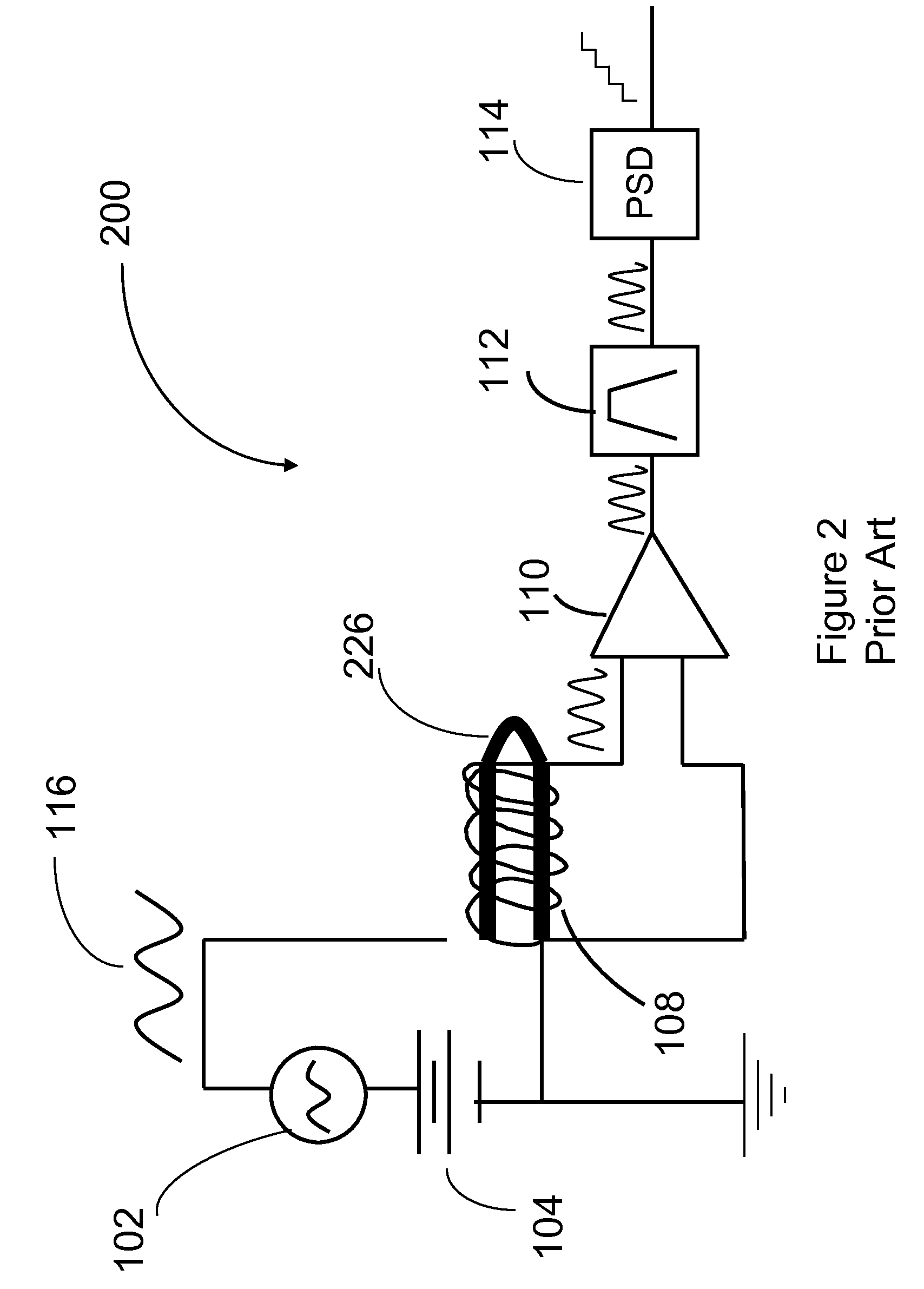Very low noise magnetometer
a magnetometer and very low noise technology, applied in the direction of magnetic field measurement using flux-gate principle, geological measurement, reradiation, etc., can solve the problems of large offset, large offset, and voltage driving the magnetic wir
- Summary
- Abstract
- Description
- Claims
- Application Information
AI Technical Summary
Problems solved by technology
Method used
Image
Examples
Embodiment Construction
[0024]In accordance with one or more aspects of the invention a fundamental mode orthogonal fluxgate magnetometer is disclosed with a magnetic alloy sensing element, an optional current source to supply an excitation current to the sensing element, a sensing coil wound over the sensing element, an amplifier, and a signal detector, where the excitation current includes a DC component on which is superimposed a smaller, high frequency, AC excitation current, where the sensing coil picks up a signal proportional to an applied magnetic field, where the amplifier amplifies the signal picked up by the sensing coil, and where the detector detects the amplified signal and produces an output voltage proportional to the applied magnetic field. Also disclosed is an electronic circuit to null the magnetometer offset and an electronic circuit to null residual AC leakage. The detector can output a digital number proportional to the magnetic field. Some magnetometers further include a second sensi...
PUM
 Login to View More
Login to View More Abstract
Description
Claims
Application Information
 Login to View More
Login to View More - R&D
- Intellectual Property
- Life Sciences
- Materials
- Tech Scout
- Unparalleled Data Quality
- Higher Quality Content
- 60% Fewer Hallucinations
Browse by: Latest US Patents, China's latest patents, Technical Efficacy Thesaurus, Application Domain, Technology Topic, Popular Technical Reports.
© 2025 PatSnap. All rights reserved.Legal|Privacy policy|Modern Slavery Act Transparency Statement|Sitemap|About US| Contact US: help@patsnap.com



